Fruit flies are fascinating insects with a complex life cycle. Understanding when they lay their eggs is essential for managing their breeding habits. Let’s explore the insights provided by scientific research and unravel the mystery of fruit fly egg-laying.
Key Takeaways:
- Fruit flies lay their eggs on decaying organic matter and overripe fruits.
- Understanding the fruit fly life cycle and reproductive habits is crucial for effective pest management.
- Proper sanitation and thorough washing of produce can help reduce the risk of fruit fly infestations.
- Fruit flies are attracted to sweet items and fermented, decaying organic matter.
- Identifying the differences between fruit flies and other insects can aid in accurate infestation management.
The Segregation of Nutrients in Fruit Fly Eggs
In the early stages of development, a mother fruit fly’s egg provides abundant nutrients for the embryo. Research conducted at the University of Rochester revealed that within hours after fertilization, protein, fat, and carbohydrates in fruit fly eggs are segregated into different cells.
This segregation of nutrients plays a crucial role in the proper development of the embryo. Specifically, carbohydrates are found to be segregated along with fat, a process that relies on specific proteins. This intricate mechanism ensures that the essential components necessary for a fruit fly’s embryonic growth are properly distributed and utilized.
Understanding this segregation process deepens our knowledge of the fruit fly egg-laying cycle. By comprehending how nutrients are allocated within the eggs, researchers gain insights into the delicate balance required for successful reproduction and development.
The Importance of Nutrient Segregation
By dissecting the intricate process of nutrient segregation in fruit fly eggs, scientists can uncover the underlying mechanisms that facilitate embryonic development. This knowledge paves the way for a better understanding of the egg-laying period and cycle of fruit flies.
| Nutrient | Role |
|---|---|
| Protein | Provides structural components and aids in growth. |
| Fat | Serves as an energy reserve and insulation for the developing embryo. |
| Carbohydrates | Supplies energy for the embryo’s metabolic processes. |
The segregation of protein, fat, and carbohydrates highlights the complexity and precision of fruit fly reproduction. This phenomenon demonstrates the remarkable adaptability and efficiency of nature in distributing resources during the egg-laying cycle.
The Importance of Fat Separation in Fruit Fly Development
During the developmental stages of fruit flies, the segregation of fat from carbohydrates and proteins plays a crucial role. A study conducted at the University of Rochester revealed that this process is not exclusive to fruit flies but also occurs in other organisms, including snails and mice. This suggests that the proper distribution of fat during the egg-laying period is a universal phenomenon.
Disrupting the segregation of fat in fruit flies has significant implications for metabolism and embryo development. Understanding this process is essential for unraveling the intricate details of fruit fly egg-laying habits. By studying the importance of fat separation, researchers gain valuable insights into the developmental stages of these fascinating insects.
“The segregation of fat in fruit fly embryos is not limited to this insect species. It suggests that fat separation during embryo development may be a universal phenomenon.”
The Life Cycle of Fruit Flies
Fruit flies have a relatively short life cycle, lasting about a month and a half from egg to adulthood. Understanding their life cycle is essential for managing their breeding habits and controlling infestations.
After mating, a female fruit fly searches for suitable locations to lay her eggs, typically on decaying organic matter or the surface of overripe fruits. This behavior is influenced by the fruit fly’s innate egg-laying behavior, which is driven by the need to ensure optimal conditions for the survival and development of the eggs.
Once laid, the eggs incubate for a period of time, typically around 24 hours, before hatching into larvae. The larvae, also known as maggots, rely on the decaying organic matter for sustenance. They feed voraciously, consuming the organic matter to obtain energy for growth and development.
As the larvae continue to feed and grow, they enter the pupae stage. During this stage, the larvae undergo a dramatic transformation, developing into adult fruit flies. This process typically takes about a week before adult fruit flies emerge from the pupae, ready to mate and lay eggs.
Key Stages in the Fruit Fly Life Cycle:
- Egg laying by the female fruit fly on decaying organic matter or overripe fruits
- Hatching of the eggs into larvae
- Larvae feeding and growth on the organic matter
- Larvae entering the pupae stage
- Transformation of pupae into adult fruit flies
Once the adult fruit flies have emerged, the cycle repeats itself as they search for suitable locations to lay their own eggs, perpetuating the fruit fly population.
| Stage | Duration |
|---|---|
| Egg | Approximately 24 hours |
| Larva | Variable, depending on environmental factors |
| Pupae | Approximately one week |
| Adult | Variable, depending on environmental factors |
Understanding the life cycle of fruit flies enables us to implement effective strategies to control their population and prevent infestations. By addressing the breeding habits and targeting specific stages in their life cycle, we can minimize their impact and promote a pest-free environment.
Factors Influencing Fruit Fly Populations
Fruit flies are highly adaptable insects and their populations are influenced by various factors. Understanding these factors is crucial in preventing infestations and managing fruit fly breeding habits. Let’s delve into the key factors that influence fruit fly populations.
1. Warm Temperatures
Fruit flies thrive in warmer temperatures, which is why they are predominantly seen during the summertime. The optimal temperature range for fruit fly reproduction is between 75°F and 85°F (24°C and 29°C).
2. Entry Points
Fruit flies can enter homes through tiny cracks and openings, making it important to seal any potential entry points. Additionally, they can hitch a ride on infested fruits purchased from grocery stores, introducing them into your home unknowingly.
3. Attraction to Sweet Items
Fruit flies are attracted to sweet items, including ripe fruits, sugary beverages, and even spilled juices. The presence of overripe or decaying organic matter also serves as a strong attractant for fruit flies.
“Fruit flies are highly opportunistic feeders, and their attraction to sweet items makes it important to store fruits and dispose of organic waste properly.”
4. Fermented, Decaying Organic Matter
Fruit flies primarily feed on fermented, decaying organic matter. This can include rotting fruits, vegetables, and even damp areas in the kitchen where food debris accumulates. Proper sanitation and regular cleaning are essential in limiting the availability of food sources for fruit flies.
5. Reproductive Capability
Fruit flies have a rapid reproduction cycle, with females capable of laying up to 500 eggs in their short lifespan. This high reproductive capability allows fruit fly populations to increase quickly if conditions are favorable.
6. Life Cycle Duration
The life cycle of a fruit fly, from egg to adult, typically lasts around 8-10 days. This short life cycle allows for multiple generations to emerge within a short period of time, leading to an exponential increase in population if unchecked.
To effectively prevent and manage fruit fly infestations, it is crucial to address these factors by implementing proper sanitation practices, sealing potential entry points, and removing any sources of attraction for fruit flies. By doing so, you can maintain a fruit fly-free environment and protect your home from these pesky insects.
Fruit Flies and Other Insects
Fruit flies are often mistaken for other small flying insects, such as drain flies and gnats. While they may have some similarities in size and flight, fruit flies have distinct characteristics. Unlike their biting counterparts, fruit flies do not bite or attack humans or pets. They are harmless creatures that primarily feed on fermented fruits and decaying organic matter.
By understanding the differences between fruit flies and other insects, it becomes easier to accurately address and manage infestations. Identifying the unique qualities of fruit flies, such as their harmless nature and specific feeding habits, allows us to implement effective strategies for controlling their population.
What Sets Fruit Flies Apart
Fruit flies, also known as Drosophila melanogaster in the scientific community, have a distinct appearance and behavior that differentiates them from other insects. Here are some key characteristics:
- Small size: Fruit flies are tiny insects, measuring only 2-4 millimeters in length, making them smaller than gnats or mosquitoes.
- Red eyes: One of the most noticeable features of fruit flies is their distinctive red compound eyes.
- Tan body: Fruit flies have a pale tan body with black stripes on their abdomen.
- Hovering flight: Fruit flies are known for their unique flight pattern, characterized by quick and erratic movements.
- Rapid reproduction: Fruit flies have a rapid reproductive cycle, making them capable of establishing large populations within a short period.
By familiarizing ourselves with these distinct characteristics of fruit flies, we can accurately identify and differentiate them from other insects, leading to more effective control measures.
“Recognizing the distinct characteristics of fruit flies is essential for successful pest management. By accurately identifying fruit flies and understanding their unique habits, we can take targeted actions to control their population and prevent infestations.” – Pest Control Expert
Now that we’ve explored the characteristics of fruit flies and how they differ from other insects, let’s move forward and examine the potential risks associated with fruit flies in households.
| Fruit Flies | Drain Flies | Gnats |
|---|---|---|
| Harmless to humans and pets | Harmless to humans and pets | Can bite or irritate humans and pets |
| Feeds on fermented fruits and decaying organic matter | Thrives in damp areas and feeds on decomposing organic matter | Feeds on various sources, including plants, tree sap, and decaying matter |
| Red eyes, tan body with black stripes | Small, fuzzy appearance | Variable appearance, often dark-colored |
By comparing fruit flies to other common small flying insects, we can clearly see the differences in their behaviors, feeding habits, and potential risks they pose. This knowledge empowers us to take the necessary steps to effectively manage and control fruit fly infestations.
As we continue our exploration of fruit flies, the next section will delve into the potential risks associated with fruit flies in household settings. Stay tuned!
Fruit Flies and Household Risks
Fruit flies may not pose direct harm to humans or pets, but they can present risks when it comes to food contamination. These tiny insects carry bacteria on their bodies, which can transfer to surfaces and food, potentially leading to health issues. It’s crucial to be aware of the potential consequences of fruit fly infestations and take appropriate measures to prevent them.
Ingesting fruit fly eggs unknowingly is a possibility if produce is not thoroughly washed. The eggs are tiny and often go unnoticed, making it important to practice proper hygiene in handling fruits and vegetables to minimize the risk of unintentional consumption.
Although fruit flies themselves are not inherently dangerous, their presence can indicate unsanitary conditions in your home or surroundings. Addressing fruit fly infestations promptly not only helps maintain a clean and healthy environment but also prevents the risk of potential foodborne illnesses.
“Fruit flies may seem harmless, but they can contaminate your food with various bacteria. It’s crucial to address fruit fly infestations to ensure the safety and cleanliness of your surroundings.” – Dr. Emily Anderson, Entomologist
Preventing Fruit Fly Infestations in Your Home
Take the following steps to minimize the risk of fruit fly infestations:
- Keep your kitchen and dining areas clean, wiping up spills and regularly emptying garbage cans.
- Store fruits and vegetables in sealed containers or the refrigerator.
- Dispose of overripe or damaged fruits and vegetables promptly.
- Clean and sanitize sinks and drains regularly, as fruit flies are often attracted to moist areas.
- Inspect grocery store produce before bringing it into your home to ensure it is free from fruit flies.
By implementing these preventative measures and maintaining cleanliness in your environment, you can minimize the risks associated with fruit flies and create a healthier living space for you and your family.
Fruit Flies and Babies
Fruit flies may be a nuisance and can potentially contaminate food, but they do not pose any specific risks to babies beyond what they present to adults. However, it is important to ensure a clean and fruit fly-free environment to provide a safe and healthy setting for infants. By practicing proper hygiene and taking preventive measures, such as thorough washing of fruits and vegetables, you can significantly reduce the risk of fruit fly infestations.
Conclusion
In conclusion, understanding the fruit fly egg-laying habits and developmental stages is key to effectively managing and preventing infestations. Fruit flies lay their eggs on decaying organic matter and overripe fruits, making proper sanitation and cleanliness essential in reducing the risk. By gaining insights into when fruit flies lay their eggs and how they develop, we can create a pest-free environment.
Proper hygiene practices, including thorough washing of produce, play a crucial role in minimizing the chances of fruit fly infestations. By eliminating potential breeding grounds and removing attractants, such as decaying organic matter, we can significantly reduce the presence of fruit flies.
Overall, a deep understanding of fruit fly egg-laying habits and their developmental stages empowers us to take necessary preventive measures, safeguarding our homes and ensuring a clean and healthy environment for ourselves and our families.
FAQ
When do fruit flies lay their eggs?
Fruit flies lay their eggs on decaying organic matter or the surface of overripe fruits. They are attracted to sweet items and fermented, decaying organic matter.
What is the life cycle of a fruit fly?
The life cycle of a fruit fly lasts about a month and a half. After mating, a female fruit fly lays eggs, which hatch into larvae. The larvae feed on organic matter and then enter the pupae stage. After about a week as pupae, adult fruit flies emerge and begin the life cycle again.
Why is the segregation of nutrients in fruit fly eggs important?
The segregation of nutrients in fruit fly eggs is crucial for proper embryo development. Research shows that proteins, fats, and carbohydrates in fruit fly eggs are segregated into different cells shortly after fertilization. Understanding this process helps us comprehend the egg-laying cycle of fruit flies.
What is the importance of fat separation in fruit fly development?
Fat separation during embryo development is essential for proper fruit fly metabolism and embryo development. Disrupting this segregation process can lead to significant changes in development. The segregation of fat is not limited to fruit flies but also occurs in other organisms, suggesting it may be a universal phenomenon.
What factors influence fruit fly populations?
Fruit flies thrive in warmer temperatures and are predominantly seen during the summertime. They can enter homes through cracks or by hitching a ride on infested fruits from grocery stores. Proper sanitation, cleanliness, and thorough washing of produce are essential in reducing the risk of infestations.
How can I identify fruit flies from other small flying insects?
Fruit flies have distinct characteristics and primarily feed on fermented fruits and decaying organic matter. They do not bite or attack humans or pets. By understanding the differences between fruit flies and other insects, it becomes easier to accurately address and manage infestations.
Do fruit flies pose any risks to humans or pets?
Fruit flies are generally not harmful to humans or pets, but they can pose risks in terms of food contamination. They carry bacteria on their bodies, which can transfer to food and surfaces. Thorough washing of produce is crucial in reducing the risk of ingesting fruit fly eggs or encountering unsanitary conditions.
Are fruit flies harmful to babies?
Fruit flies do not pose any specific risks to babies beyond the potential contamination they present to adults. It is important to keep the environment clean and free from fruit flies to ensure a safe and healthy setting for infants. Proper hygiene practices, including the thorough washing of fruits and vegetables, can significantly reduce the risk of infestations.
How can I manage fruit fly infestations and prevent their breeding habits?
The best way to manage fruit fly infestations is through proper sanitation, cleanliness, and thorough washing of produce. Understanding when fruit flies lay their eggs and their developmental stages is crucial for effective prevention. By creating a clean and healthy environment, you can significantly reduce the risk of fruit fly infestations.

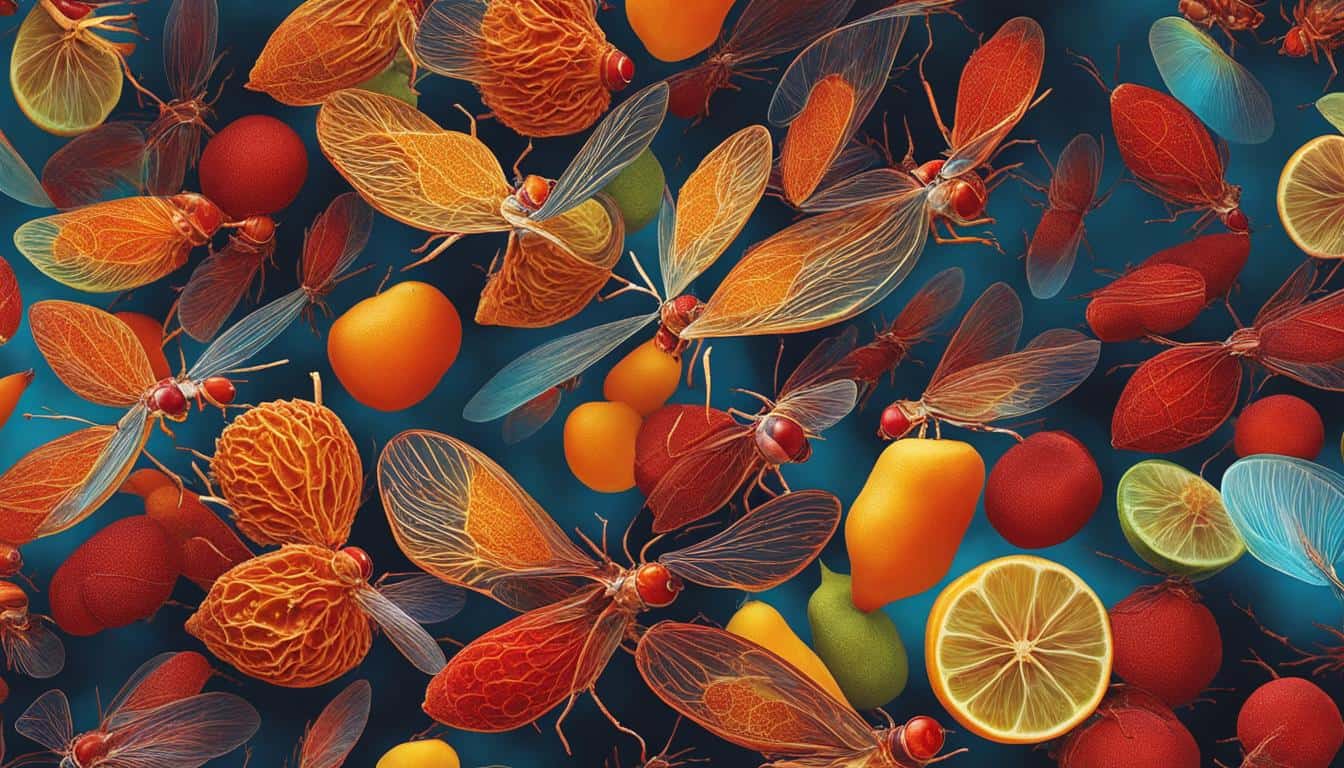
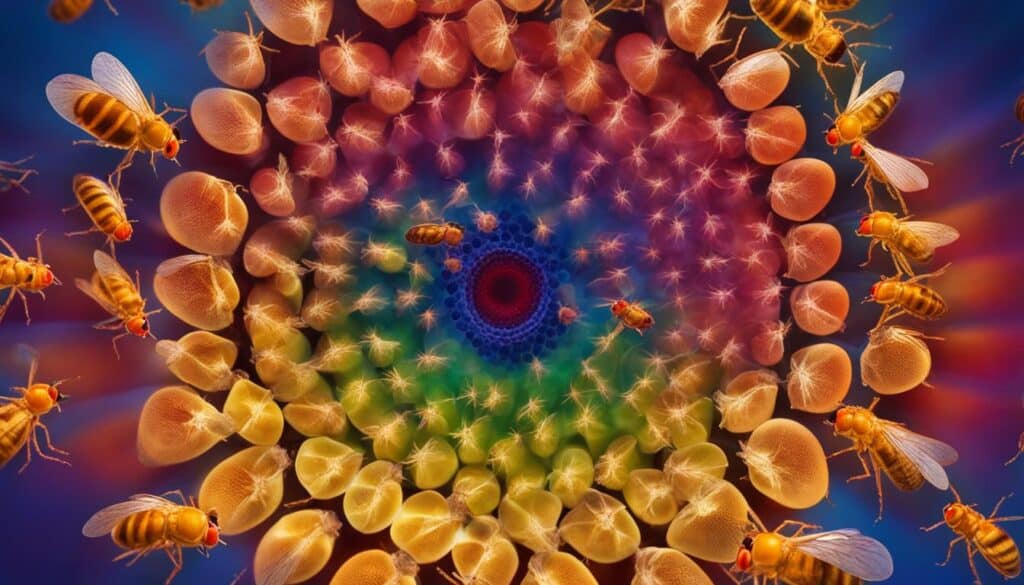
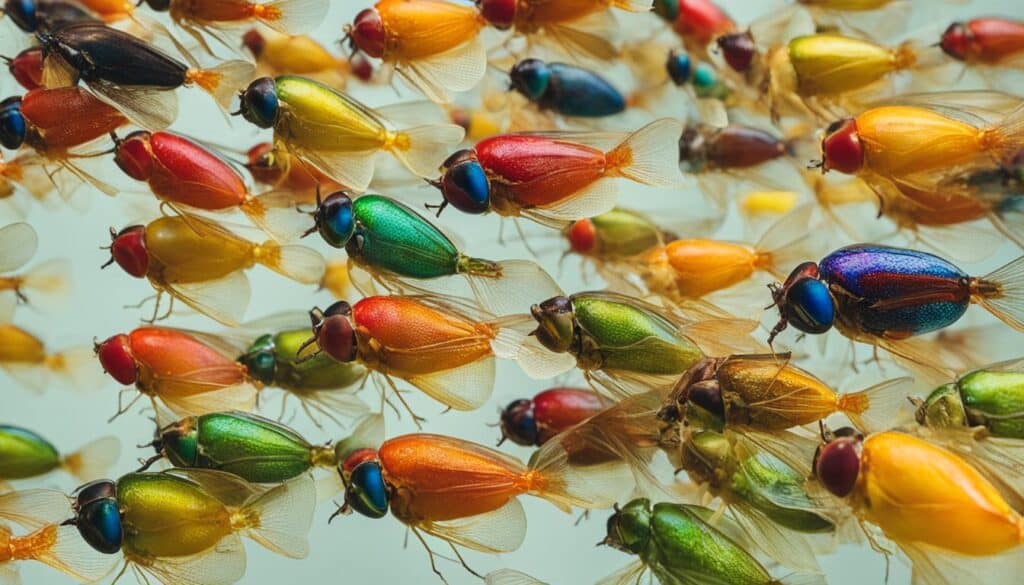
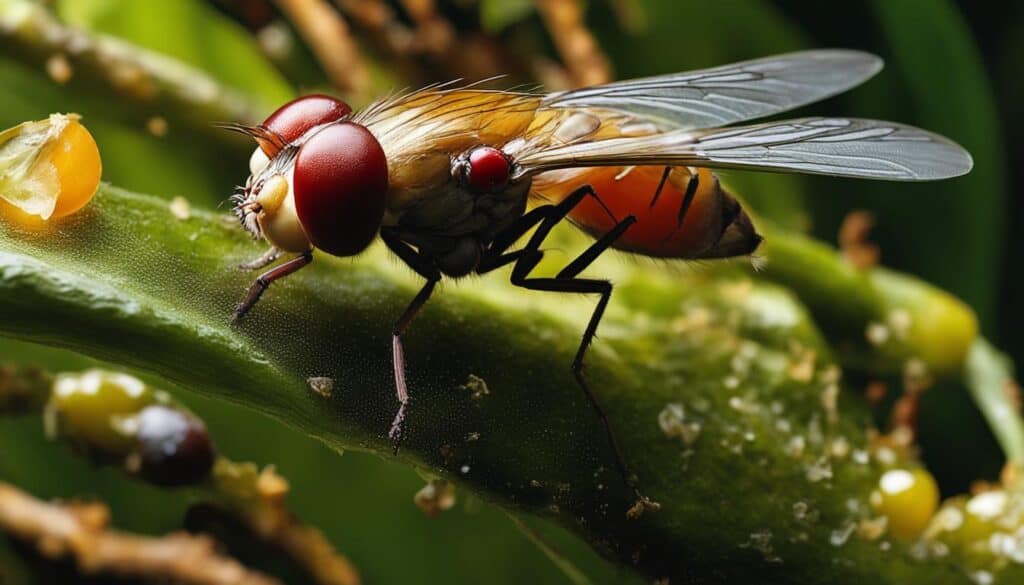
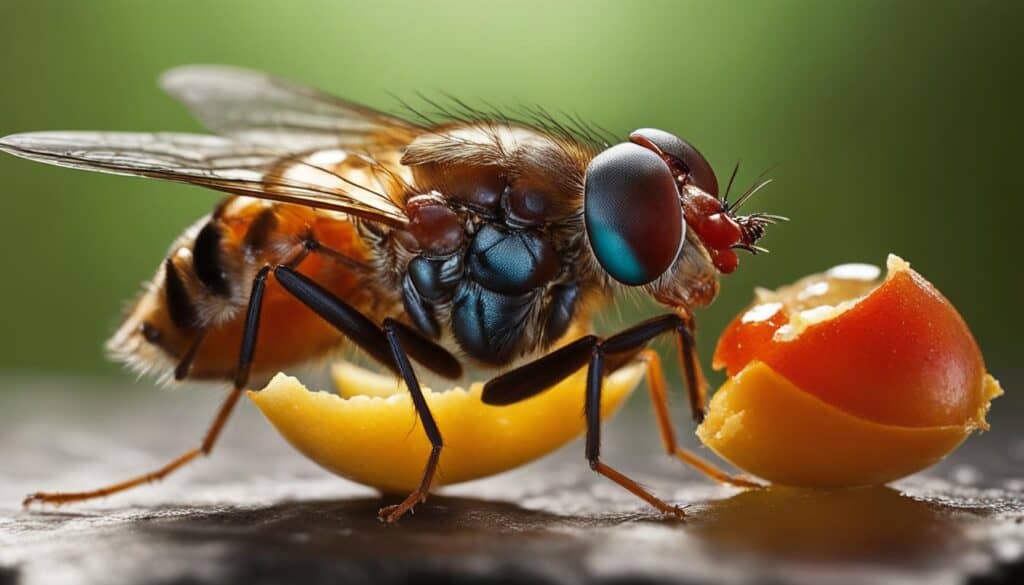



Leave a Reply